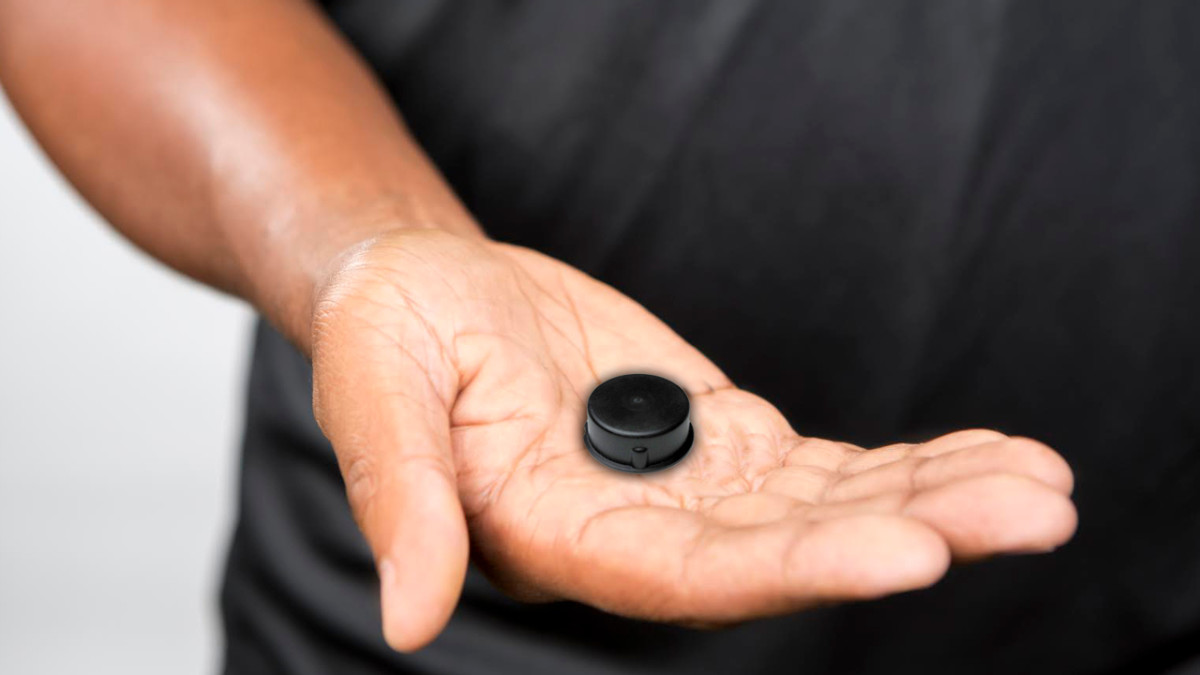Zebra Provides Next Gen Stats and So Much More
GREEN BAY, Wis. – In scouting lingo, new Green Bay Packers quarterback Jordan Love can really spin the football.
Thanks to Zebra Technologies, that phrase can be quantified.
Zebra will be entering its seventh season as the official player tracking technology partner of the NFL. With its radio frequency identification chips – more widely known as RFID chips – embedded in the shoulder pads and footballs, Zebra is leading a data-driven revolution of the game.
Two RFID chips, about the diameter of a nickel and thickness of two nickels, are located on each player’s shoulder pads. On game days, data from those chips flows immediately into 22 lunchbox-sized receiver boxes located permanently in all 31 NFL stadiums as well as the stadiums in England and Mexico that host NFL games.
“They’re not noticeable to the player whatsoever,” said John Pollard, the vice president of business development for Zebra Sports. “Those tags communicate with the receiver boxes and register information such as who the player is and if they’re on the field. If they’re on the field, we can automatically collect location information, formation information and alignment information. The tags also collect proximity data, so we can measure how far players are from each other, both from the same team and the opponent, which, as you can imagine, provides some really unique data. The tags also capture speed, distance, acceleration, deceleration and distance traveled.”
That data is translated to the Next Gen Stats site on NFL.com and used in game broadcasts and displayed on stadium scoreboards. It’s also available to coaches and scouts looking for new ways to gain a competitive advantage.
Zebra’s formal partnership with the NFL began in 2014. That’s when players started wearing the RFID chips in games. What was missing was the context of knowing where the players were in relation to the football. Thus, the next big step came in 2017, when RFID chips were put in the balls. Through Zebra’s partnership with the league, it worked with Wilson Sporting Goods to determine the best manner to install an RFID tag into the ball.

“The NFL football weighs about 400 grams and the tag inside the football weighs less than 4 grams, so it’s less than 1 percent of the weight of the ball,” Pollard said. “During the construction of the ball, we take our tag and we meld it into the rubber bladder of the football.” The tagged balls collect velocity, rotational information (RPMs) and locational information about passes. The height of passes and kicks also can be measured.
Zebra provides data for every regular-season and postseason game and practically every preseason game; the Hall of Fame Game at Tom Benson Hall of Fame Stadium in Canton, Ohio, being a rare exception. It also has contracts to provide practice data for about one-third of the league’s teams. For nonpadded practices, Neoprene pouches containing RFID chips are sewn into the interior of the practice jersey. The Packers – former coach Mike McCarthy was fond of pointing to the team’s “GPS” data even though it was RFID – have been among Zebra’s clients.
There seemingly is no end point for the potential usage of the data. Some of it is simple yet invaluable, such as tracking the number of passes a quarterback throws at practice. That could be important for the Packers, whether it’s a veteran like Aaron Rodgers or a rookie like Love.
“We can calculate that automatically vs. having an assistant handle that manually,” Pollard said. “As much as the advanced analytics are fun and new and growing, the fact that we do that is valuable. When those quarterbacks get out there at the beginning of practice before the structured stuff happens, they might be throwing 30 or 40 footballs and no one is keeping track of that. Maybe it’s a college player coming into the NFL and is going to have a longer season or perhaps it’s a veteran quarterback that you want to manage their pitch count during the week, we’re finding the automatic pass counts are really useful.”

Other data is more complex and can become invaluable teaching and evaluation tools. For instance, did a linebacker take a wrong step on play action, and how well did he recover to get into his coverage area? How fast is a player – not just the 40-yard dash times from the Scouting Combine and the popular max speeds at NFL.com but from getting to Point A to Point B in the middle of a play?
“Through the use of software, we’re able to do segments of time during a play,” Pollard said. “On our side and in conjunction with the teams that we work with on the practice side, if we can isolate how far a defensive back is from his primary coverage responsibility and say, ‘It’s zone defense. How far was the defensive back away? What was his acceleration in that short distance?’ From an evaluation perspective, using software and more intense analytics, we can start to provide even more solutions for teams.”
Zebra’s technology is amazing, not only in terms of the data provided to the coaches but the ease of use.
“The tags never have to be removed,” Pollard said. “They can be washed and dried. They can be turned on and off by a wand that wakes them up from sleep mode. We get high marks from operational efficiency. We don’t need staff members trying to take out the devices and recharging them and replacing them. I get pumped about the ball metrics but, boy, when you get to a club and say, ‘How would you like me to save you 3 hours per day because your staff isn’t taking 60-plus devices out of harnesses and then replacing them back in after recharging, and then having to do it all over it again? Your staff can do other things.’”
In January, Zebra for the third time provided data for talent evaluators at the Senior Bowl. Love was one of the top quarterback prospects at the game and delivered a strong week that played a role in the Packers selecting him as their presumed quarterback of the future in the first round. Love’s arm talent is obvious; Zebra’s data added layers of context.
“Jordan Love had a great week in terms of the ball metrics,” Pollard said. “One of his throws measured 747 rpms during its initial rotation, which is the moment the ball is released from his hand. You’ve heard forever, ‘That quarterback can spin it.’ Now, we can calculate the spin rate. He created the second-highest initial rpm of the week, one behind Justin Herbert. Now, it’s still early in how teams utilize this information. Some coaching staffs and performance coaches believe high RPMs can be indicative of accuracy potential. The higher spin rates, some coaches have suggested that it could help influence their consideration in terms of a player who can throw the ball in bad weather conditions. The hypothesis is perhaps high RPMs means wind and precipitation could have less influence on the flight of the ball, which I think is an interesting conversation point.”
Video: Highest RPMs at last three Senior Bowls
-6269900502a1e0ca581b6c34076450d4.jpg)